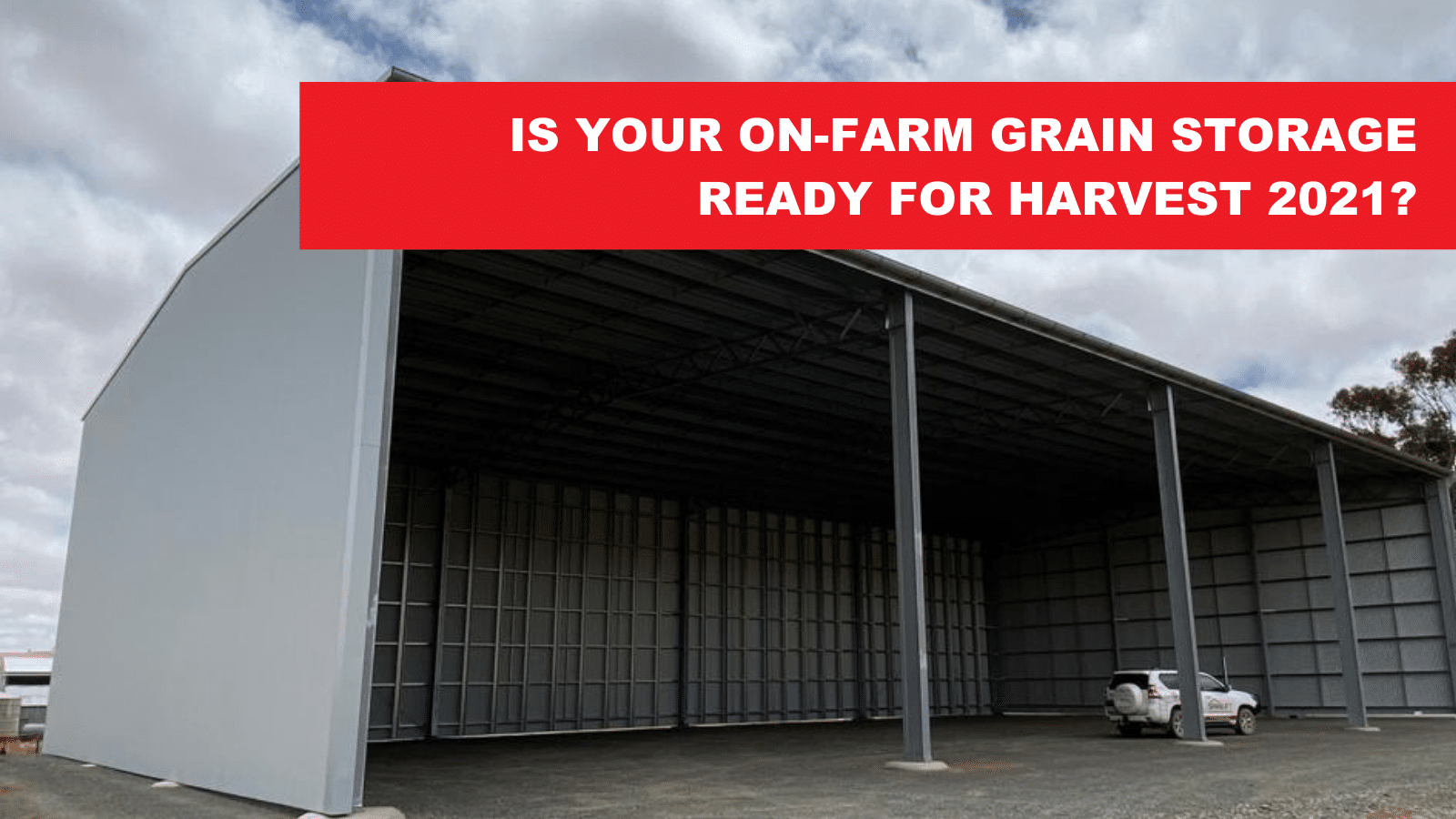As South Australians gear up for a near-record harvest, the feeling can be a bit daunting when considering grain storage – here’s why.
While harvesting and crops are reaching amazing heights, their storage capacity isn’t. Felt nationwide, this predicament holds particular weight in the Eyre Peninsula. It’s hard to imagine what these large amounts are, so here’s a snapshot of the estimated harvest to come. We’re looking at 1.6 million tonnes of wheat, 538,000 tonnes of barley and that’s just on the Eyre Peninsula alone.
Pair this with technology growths, the machinery we use to harvest becomes more efficient and faster. Without the proper storage in place, keeping pace with your machinery and having ample storage becomes difficult.
So what options are on the table?
Navigating these sticky storage circumstances can be difficult, but there are both short-term and long-term ways around them.
Short Term Grain Storage
If you don’t have space on-site, then the next best short-term solution is to shift your harvest off-site.
T-Ports utilise top-tier technology to create low-cost, highly efficient port infrastructure and can offer invaluable support when there’s just too much crop to handle. However, there can be some drawbacks. Transport logistics is a big consideration, and on top of this whether there’s availability within the company’s storage. This is a nation-wide problem, so space is in demand when it comes to grain storage.
Long-Term Grain Storage
While these short-term options are good for immediate relief, looking long-term they bring some drawbacks. A sure-fire way to see successful future harvests is to prepare for them. Building a shed on your property for long-term grain storage will meet the demands of years to come. For long term use and built to last generations – it doesn’t get much more long-term than that.
“We’re regularly finding fertiliser prices are sky-rocketing which is causing issues for farmers trying to buy in advance. Investing in a fertiliser shed is another easy way to secure stock early on off-season pricing, keeping it in a shed and using it when you need it,” explains Charles Grace, Spanlift Business Development Manager.
“The advantage of an on-farm grain storage shed that can accommodate fertiliser as it’s also very useful for keeping grain. If you’re able to juggle fertiliser or have some storage bays, you can build a shed that accommodates both during harvest for grain storage or other uses.”
Multipurpose Shed Design
So why would you build a grain shed, even if it’s for short term storage?
It’s well known that harvesters are getting better and better at getting the crop off, and the amount of transport you need to keep up with the harvester is ever increasing. If you build an on-farm shed to accommodate grain storage, you only need to transport it between the harvester or paddock into the shed.
Not only do you save money, but it’s a multi-purpose shed – and if you don’t have fertiliser or grain, you can keep machinery in there, too.
Other Storage Considerations
Regardless of whether you’re considering a grain shed, hay shed, fertiliser store, machinery shed, workshop or anything in between – there are certain considerations that need discussion, such as:
-
-
- loading on walls
- machinery access
- ventilation
- light ingress
- dust control
- vermin control
-
Above all, your shed needs to be tough and durable. Our galvanized steel structure will produce just that – a reliable shed that’s built to last generations.
Where this option is a massive investment upfront, it will pay for itself in only a few seasons time while giving you the freedom to sell when the market is high. Opting for this long-term solution will save time, effort and money amid future harvest.
Need help to navigate the current climate and prepare your tailored solution? Get in touch with one of our friendly and skilled staff and get your harvest sorted.



